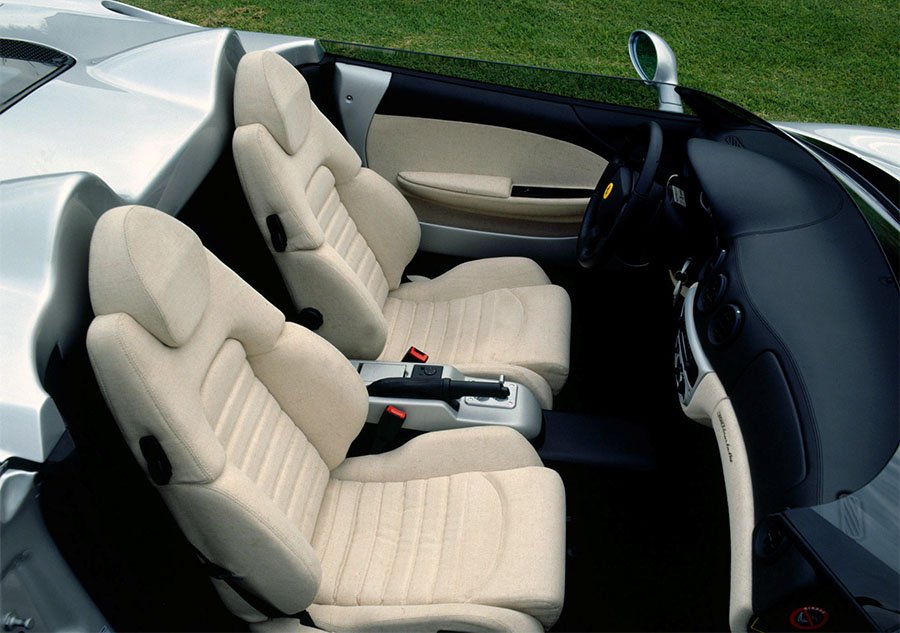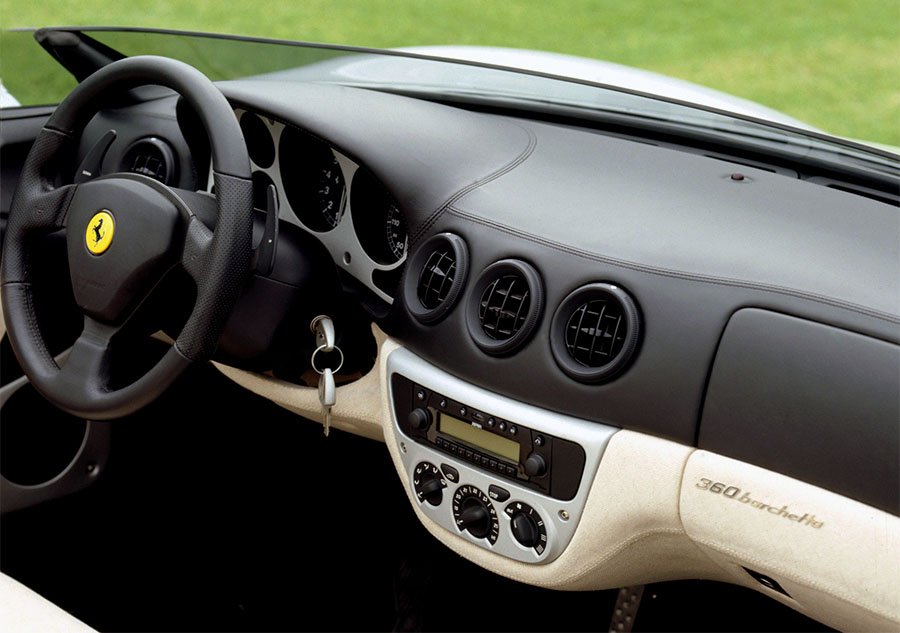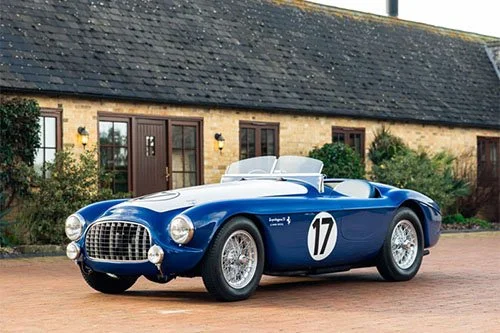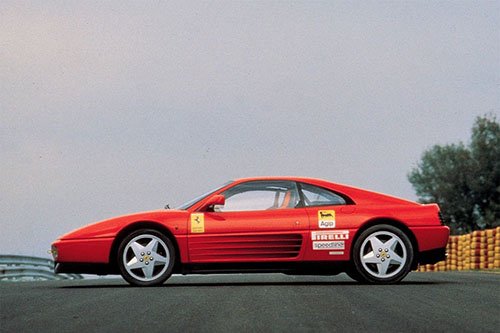Guide: Ferrari 360 Barchetta
Background
When Luca di Montezemolo returned for his second stint at Ferrari in November 1991, he arrived as the company’s President.
Di Montezemolo had first joined Ferrari in 1973 after a spell at Fiat. Having briefly worked as Enzo Ferrari’s assistant, 26 year old di Montezemolo was promoted to manage the racing department in 1974. Scuderia Ferrari won consecutive Constructors’ titles in 1975 / 1976 and Niki Lauda secured the 1975 Drivers’ crown.
During 1976, di Montezemolo was promoted to head up of all the Fiat Group’s motor sport activities. A year later he became a senior manager at the firm. He subsequently occupied a number of high profile roles within the FIAT empire and elsewhere. During this period, di Montezemolo famously managed the organising committee for the 1990 World Cup.
Meanwhile, since Enzo Ferrari’s death in August 1988, the company that bore his name had struggled for direction.
At the behest of Fiat head, Gianni Agnelli, di Montezemolo returned to the company as its President in November 1991.
Over the next few years, di Montezemolo transformed Ferrari’s balance sheet and recruited the personnel that would return the company to the pinnacle of Formula 1.
As a token of his gratitude to di Montezemolo, Gianni Agnelli secretly commissioned a unique 360 Barchetta for his friend’s wedding in August 2000. At the time the order was placed, Ferrari had just won the 1999 F1 Constructors’ title and were on the cusp of one of the most dominant periods in Formula 1 history.
Gianni Agnelli was of course no stranger to bespoke motor cars. Prior to his installation as boss of Fiat (the company started by his grandfather in 1899), Agnelli had ordered a fleet of customised Ferraris and Maseratis. More special commissions followed after he took over as head of Fiat in 1966, but from this point Agnelli tried hard to shed his playboy image.
Poignantly, the 360 Barchetta that Agnelli ordered was the last commission before his death in January 2003.
Bodywork
Thanks to its radical cut-down windscreen, the unique Barchetta built on chassis 120020 looked very different from any other 360.
The Speedtser-esque screen was contoured to deflect air over the cabin area; it was given a smoked tint and wrapped around the sides of the cabin to give a seamless look.
The rear deck was also modified. The standard 360 Spider came with long offset fairings and integrated roll hoops behind each seat. By contrast, the Barchetta featured stubby centralised fairings behind each seat that were reminiscent of Prototype racing cars from the 1950s and 1960s.
No roof was supplied.
Otherwise, all the trademark 360 features remained. At the front, the Barchetta retained Pininfarina’s gaping nose-mounted radiator intakes, the raised centre section of the front apron and headlights mounted underneath clear acrylic covers.
Down each flank were 250 LM-style shoulder-mounted engine cooling scoops. As per the Spider, the Barchetta’s engine was displayed underneath a flat glass cover with meshed grilles on either side.
Like many of Gianni Agnelli’s commissions, he chose a discrete exterior shade (Argento Nurburgring) to which delicate pinstripes were added along the swage line.
Interior
For the interior, Agnelli selected fabric rather that leather upholstery. Crema velour was used to cover the seats, lower dash and door cards. Black leather was used for the dash, upper door panels, steering wheel, forward section of the central tunnel and the upper rear bulkhead panel. Black carpet was used to cover practically every other surface.
In addition to its special upholstery, chassis 120020 also came with a shortened central console between the seats.
Otherwise, aside from a chrome ‘360 barchetta’ script on the glovebox, the cockpit was configured to standard specification.
Chassis
As per every 360, under the skin was an extruded aluminium chassis with a 2600mm wheelbase.
Independent suspension was via double wishbones with coil springs and electronically controlled Sachs dampers. Anti-roll bars were fitted at either end. Anti-dive and anti-squat geometry was also installed.
The continually adjusting Sachs dampers were manufactured in aluminium. They adapted according to parameters such as steering angle, road speed, braking effect and acceleration to optimise handling. The driver could choose from either Sport or Normal damper settings via a button on the centre console.
330mm cross-drilled and ventilated brake discs were fitted to each corner along with four-piston light alloy calipers. A Bosch 5.3 system controlled the ABS and ASR traction control. This also offered a choice of Normal and Sport modes or could be switched off completely if desired.
18-inch Speedline aluminium wheels were a stylised version of the classic Ferrari five-spoke ‘star’ design. They measured 7.5-inches wide at the front, 10-inches wide at the rear and were originally shod with Pirelli P Zero tyres.
Power steering was fitted as standard.
Duel fuel tanks with a combined 95-litre capacity were fitted either side of the engine.
Engine / Gearbox
The 360’s Tipo F131B engine was a a naturally aspirated dual overhead camshaft 90° V8 with five valves per cylinder, variable valve timing and dry-sump lubrication.
The block, cylinder heads, sump and sundry castings were constructed from light alloy. Connecting rods were titanium.
As per the outgoing F355, bore was kept at 85mm. Stroke was extended from 77mm to 79mm for an overall displacement of 3586cc (a gain of 90cc).
New equipment included a flat-plane crankshaft and Bosch Motronic 7.3 engine management with drive-by-wire throttle and variable back pressure exhaust system. Air flow was further optimised into and out of the engine.
Cosmetically the motor was dressed up with distinctive red crackle finish intake plenums.
Compared to the F355, compression was lowered from 11.1:1 to 11:0.1.
Peak output was 394bhp at 8500rpm and 275lb-ft at 4750rpm.
Gianni Agnelli specified the optional electro-hydraulic F1 automated manual gearbox that came with carbonfibre gear selection paddles mounted behind the steering wheel. Transmission was through a single-plate clutch and limited-slip differential.
Subsequent History
Chassis 120020 ultimately cost nearly three times the price of a standard 360 Spider. Had it been commissioned by a company outisder, this figure would most likely have been substantially higher.
The car is understood to have been retained by Luca di Montezemolo since delivery.
Text copyright: Supercar Nostalgia
Photo copyright: Ferrari - https://www.ferrari.com







































